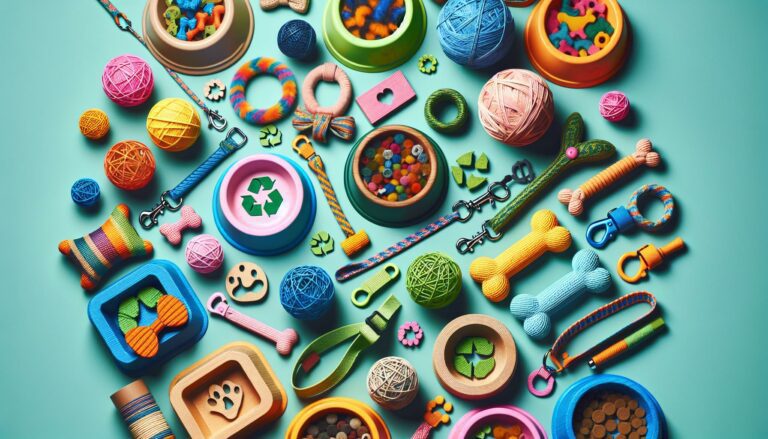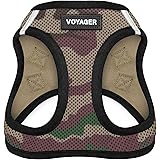When we talk about sustainability, we bring up a concept that’s vital for the well-being of our planet. But how does sustainability fit into the world of pet products? It’s quite simple: a sustainable pet product is one that’s made in a way that minimizes its environmental impact, from production to disposal. Let’s unpack what makes a pet product truly sustainable.
Understanding Sustainability in Pet Products
Sustainability involves making use of resources in a manner that doesn’t harm the environment and ensures that future generations can also use these resources. In the context of pet products, it means looking for items that protect the environment at every stage of their lifecycle. Here are the key features that contribute to the sustainability of a pet product:
Eco-Friendly Materials
The choice of materials is a big factor in determining the sustainability of a pet product. Products made from recycled, biodegradable, or renewable materials are generally kinder to the planet. For instance, pet beds made from organic cotton or toys constructed from recycled plastics help reduce waste and the consumption of new resources.
Longevity and Durability
A sustainable pet product should withstand the test of time. Durability ensures that the product doesn’t need to be replaced frequently, which in turn means fewer resources are consumed. Products that can be easily repaired or upcycled also fall into this category, as they extend the lifecycle of an item.
Energy-Efficient Manufacturing
The process used to make pet products can have a significant environmental impact. Companies that utilize renewable energy and implement energy-saving measures in their manufacturing processes are helping to make the industry more sustainable.
Responsible Sourcing
Where materials come from is just as important as what they are. Ethical sourcing involves obtaining materials in a way that doesn’t negatively affect the communities or ecosystems where they’re sourced from. Products that use sustainably sourced timber or have been certified by organizations like the Marine Stewardship Council (MSC) for fish-based products play a large part in protecting natural habitats.
Top 5 Recommendations:
Homeika Dog Grooming Kit & Vacuum, 3L Pet Grooming Vacuum 99% Pet Hair Suction, ...
$99.99 (as of May 19, 2024 18:20 GMT +03:00 - More infoProduct prices and availability are accurate as of the date/time indicated and are subject to change. Any price and availability information displayed on [relevant Amazon Site(s), as applicable] at the time of purchase will apply to the purchase of this product.)Voyager Step-in Air Dog Harness - All Weather Mesh Step in Vest Harness for Smal...
$9.07 (as of May 19, 2024 18:20 GMT +03:00 - More infoProduct prices and availability are accurate as of the date/time indicated and are subject to change. Any price and availability information displayed on [relevant Amazon Site(s), as applicable] at the time of purchase will apply to the purchase of this product.)OLANLY Dog Door Mat for Muddy Paws, Absorbs Moisture and Dirt, Non-Slip Washable...
$9.89 (as of May 19, 2024 18:20 GMT +03:00 - More infoProduct prices and availability are accurate as of the date/time indicated and are subject to change. Any price and availability information displayed on [relevant Amazon Site(s), as applicable] at the time of purchase will apply to the purchase of this product.)Amazon Basics Dog and Puppy Pee Pads with 5-Layer Leak-Proof Design and Quick-Dr...
$15.22 (as of May 19, 2024 18:20 GMT +03:00 - More infoProduct prices and availability are accurate as of the date/time indicated and are subject to change. Any price and availability information displayed on [relevant Amazon Site(s), as applicable] at the time of purchase will apply to the purchase of this product.)Jasonwell Foldable Dog Pet Bath Pool Collapsible Dog Pet Pool Bathing Tub Kiddie...
$22.99 (as of May 19, 2024 18:20 GMT +03:00 - More infoProduct prices and availability are accurate as of the date/time indicated and are subject to change. Any price and availability information displayed on [relevant Amazon Site(s), as applicable] at the time of purchase will apply to the purchase of this product.)Minimal Packaging
Excessive packaging contributes to waste. Sustainable pet products often come with minimal packaging, and if they do need to be packaged, the materials used are either recyclable or compostable.
Toxins and Chemicals
A product’s impact isn’t just felt in its materials and manufacturing; it’s also tied to the chemicals it might release during use or disposal. Sustainable pet products are made without harmful toxins and chemicals, ensuring they won’t pollute the environment or harm other living beings.
Decoding Labels and Certifications
Understanding the labels and certifications on pet products can help you ascertain their sustainability. Here are a few that you might come across:
Organic Certification
Products with an organic certification meet stringent standards about the way ingredients are grown, without the use of synthetic pesticides or fertilizers. For example, an organic dog treat ensures that all agricultural ingredients were produced in sustainable ways.
Recycled Content
When a product bears a label indicating it’s made with recycled content, it means that post-consumer materials were used in its production. This reduces the need for new resources and lowers the item’s environmental impact.
Fair Trade
Fair Trade certification ensures that producers in developing countries are paid a fair price for their goods, and it often includes environmental standards too. While more common in human products, the Fair Trade movement is making its way into the pet industry as well.
Green Seal or EcoLogo
The Green Seal or EcoLogo certifications indicate that a product has met rigorous, science-based environmental standards. Products with these labels are verified to have a reduced environmental impact throughout their life cycle.
Influencing Factors Beyond the Product Itself
A product’s sustainability also extends to the practices of the company that produces it. Consider the following when evaluating a company’s sustainability efforts:
Corporate Social Responsibility (CSR)
Many companies engage in CSR programs, which might involve environment-focused efforts such as tree planting or supporting wildlife conservation. While CSR doesn’t change the sustainability of a product per se, it can signify a company’s overall commitment to sustainability.
Company Policies and Transparency
Companies with open policies regarding their supply chains, labor practices, and environmental contributions are often more trusted by consumers who value sustainability. Transparency in these areas suggests a company takes its environmental responsibilities seriously.
Choosing Sustainable Pet Products
So, how do you apply all this knowledge when shopping for pet products? Here are some tips:
Read Labels Carefully
Look for the certifications and labels that indicate sustainability. If the terminology is confusing, don’t be shy about doing a quick online search to see what those certifications really stand for.
Research the Company
Spend a bit of time learning about the company behind the product. Do they have sustainability reports or information about their manufacturing processes? This information can often be found on their official website.
Consider the Full Lifecycle
Think about what will happen to a product when it’s no longer needed. Can it be composted, recycled, or donated? Products that offer a sustainable end-of-life option add to their overall ecological merit.
Quality Over Quantity
It might be tempting to buy lots of toys or accessories for your pet, but focusing on quality and durability can reduce waste and save resources in the long run.
Finishing Thoughts
Sustainability in pet products is about making choices that are mindful of environmental impact and the future health of our planet. It’s a commitment from manufacturers and consumers alike to consider the materials, production methods, and lifecycle of the items we provide for our furry friends. With a bit more thought and research, we can all make a difference in creating a more sustainable world, one pet product at a time.






